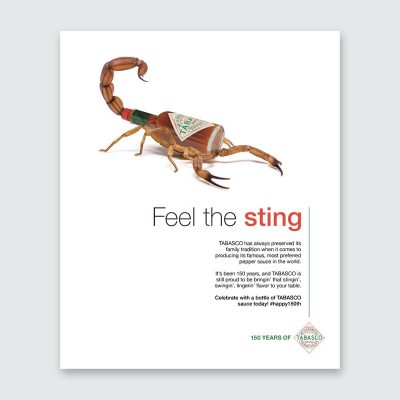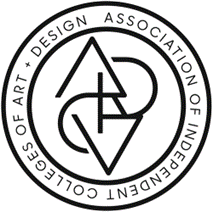School of Media : Culture : Design
Experience Design
Bachelor of Design [STEM Program]
Experience Design (formerly Graphic Design) is a combination of Communication/Graphic Design, Product Design, and Service Design (UX/UI).
- Communication Design is an encompassing title for graphic, interaction/UX and UI, and motion design.
- Product Design is the combination of product manufacturing and business knowledge to convert ideas into physical and usable objects.
- Service Design is the coordination and combination of people, communication, and material components to create quality service.
Imagine A World Where Your Design Truly Changes People’s Lives
Your design makes a difference because it concerns the entire user journey and interaction with a product or service. 20th century graphic design was limited to merely visual communication. 21st century designers need to learn, know, and practice design beyond the visual. Why? Because today’s consumers want to be more engaged—they are seeking innovation and inspiration. Ultimately, they want a meaningful experience!
The Bachelor of Design degree in Experience Design is a multi-disciplinary design approach that prioritizes human-centric environments (digital & physical) supportive of positive experiences and enhancing user’s well-being. It uses communicative, emotional, and behavioral research methods connecting communications, products, services, environments, and systems to solve complex problems for positive outcomes. This approach to design values human experiences above other factors such as utility, aesthetics, and economy. The goal of this curriculum is to motivate and empower learners to take informed decisions and actions at the individual, community, and global levels.
Areas of Study
Experience Design will prepare students with future-proof areas of study. Here are some topics the degree will explore:
- Data Analysis
- Design History
- Design Elements and Principles
- Digital Tools and Applications
- Environmental Design
- Identity and Branding
- Information Theory
- Interaction/Interface Design
- Marketing Strategy
- Motion Design
- Package and Product Design
- Visual Communication
Internships & Careers
|
Facilities
Experience Design students have access to a variety of Mac and PC labs, each equipped with 16 – 20 computer stations that include all the necessary software for print, interactive and motion courses as well as word processing and presentation software. Each lab also have scanners and printers that allow both laser printing and large-format plotter printing. Additionally, Woodbury has an extensive digital fabrication lab with laser cutters and 3D printers.
Senior graphic design students have access to a designated senior studio with individual working spaces for both digital and production work.
Experience Design Courses
Woodbury University’s School of Media, Culture & Design is proud to announce the launch of a new program, Bachelor of Design (BDes) in Experience Design (XD). It is built upon Woodbury’s successful Graphic Design program that has been recognized among top design programs nationwide since 2017. This multi-disciplinary program focuses on creating human-centered design in both digital and real-space environments. It is a natural evolution from our decades of teaching and training students to become top designers.
FOUN 101 Beginning Drawing
This is a fundamental course in freehand observational drawing. Various media and methods are introduced to develop perceptual and technical drawing skills. Through in-class projects and outside sketchbook practice, students study line, shape, form, proportion, perspective, and tone with an emphasis on spatial relationships and the effects of light on form. Drawing and composition are also studied as an opportunity to express conceptual content in individual design processes. Studio. 3 units. Prerequisites: None.
FOUN 102 Design and Composition
This course introduces students to the elements and principles of design and to the processes of design thinking. Formal visual properties of line, shape, form, pattern, value, texture, and sequence are studied in their relationship to content and compositional organizing systems. Studio exercises using various media explore concepts of balance, harmony, repetition, rhythm, scale, and time in two-, three-, and four-dimensional organizations. Emphasis is placed on developing creative design concepts, gaining practical problem-solving skills, and communicating project solutions visually and verbally. Examples of historical and professional art and design are presented so that students may recognize their influence on contemporary design and to relate their own design efforts to a larger cultural context. Studio. 3 units. Prerequisites: None.
BDES 101 Digital Practices + Techniques 1
An introduction to the fundamentals of digital technology, including its role in the creation, reproduction, and distribution of content. Students will learn and utilize professional software used in the design industry and become familiar with the digital tools and terminology applicable to the creative disciplines. Studio. 3 units. Prerequisites: None.
BDES 102 Digital Practices + Techniques 2
An advanced course in digital technology utilizing Adobe Creative Cloud applications focusing on advanced workflows, digital effects and imaging, and motion design. Students will learn to use technological tools and systems to address design problems and further design goals. Studio. 3 units. Prerequisites: BDES 101 Digital Practices + Techniques 1.
FOUN 110 Three-Dimensional Design
An introduction to the fundamentals of three-dimensional design, including the creation and construction of forms in space utilizing hand tools, digital technology, machine tool technology, and form-making materials. The class will include the study of linear, planar and volumetric elements; utilize primary forms as a basis for three-dimensional composition; develop fundamental fabrication skills; and introduce the principles of additive and reductive form, weight and weightlessness, and scale and the body. Studio. 3 units. Prerequisites: None.
BDES 103 Fabrication Studio
An introduction to the safe, creative and effective use and operation of fabrication tools and machinery. Studio. 1 unit. Prerequisites: None.
BDES 104 Camera Studio
An introduction to still and time-based camera technologies and how to creatively use them in image making and narrative processes. Studio. 1 unit. Prerequisites: None.
BDES 201 Experience Design Studio 1
An introduction to design as a means for communication. Students will apply creative design strategies employing typography and image to explore the principles and methodologies associated with the development of communication design as a visual language. Students will utilize design process—how form, function and content interrelate to create meaning in the communication of ideas, messages, and information through print and digital media, artifacts, information, environments, and systems. Studio. 4 units. Prerequisites: BDES 101 Digital Practices + Techniques 1; BDES 103 Fabrication Studio; BDES 104 Camera Studio.
BDES 202 Experience Design Studio 2
An introduction to design as a means for communication. Students will apply creative design strategies employing typography, image, and sound to explore the principles and methodologies associated with the development of communication design as a visual language. The class will emphasize layout and grid systems, typographic structures, and the use of photography and illustrations in print and digital media. Students will be introduced to the methodologies for designing and managing materials for social media platforms. Studio. 4 units. Prerequisites: BDES 101 Digital Practices + Techniques 1; BDES 103 Fabrication Studio; BDES 104 Camera Studio.
BDES 203 Experience Design Studio 3
An introduction to the fundamental principles, practical applications, core concepts and theories underlying design systems in Visual Communications, Product, and Service Design. Students will learn how to develop and implement design systems to ensure consistency and efficiency, creating cohesive and scalable user experiences across various design disciplines and platforms. Students will demonstrate their ability to create cohesive, scalable, and user-centric design systems. Studio. 4 units. Prerequisites: BDES 201 Experience Design Studio 1.
BDES 204 Experience Design Studio 4
An introduction to coding for interaction and motion design exploring the best practices in front-end digital development, including the exploration of methods of organization and mapping of information integrating layers of content into both linear and non-liner, interactive narratives. Studio. 4 units. Prerequisites: BDES 201 Experience Design Studio 1.
BDES 205 Experience Design Studio 5
An advanced exploration of the contemporary practices of human-centered interface and system design. Through coding, interaction design, and UI/UX, students will consider, evaluate, and anticipate the consequences of their work in a variety of systems. Emphasis will be placed on the design of user-centered navigational structures and systems, audience, organization of information, and access to digital applications—which will be evaluated for responsiveness and usability across devices. Studio. 4 units. Prerequisites: BDES 201 Experience Design Studio 1.
BDES 209 History of Design 1
This course introduces significant developments in the history of design from the mid 1800’s to the mid 1900’s. The lectures will examine a variety of artifacts, including furniture, interiors, graphic design, and products, drawing examples from the various styles. Throughout, design will be situated within its social, cultural, political, and economic contexts. Materials, technology, and debates informing the configuration of movements such as Modernism and aesthetics will be considered, as will the changing role of the designer and the effects of the shifting ways of life on patterns of production and consumption. Lecture. 3 units. Prerequisites: WRIT 113.
BDES 210 History of Design 2
This course explores developments in the history of design from mid 1900’s to today. The lectures will examine a variety of artifacts, including furniture, interiors, graphic design, and products, drawing examples from the various styles. Throughout, design will be situated within its social, cultural, political, and economic contexts from the perspectives of post-modernism and contemporary art and design theories. Patterns of production, consumption, and sustainability as well as issues of gender, race, and class in relation to design will be analyzed. Lecture. 3 units. Prerequisites: BDES 209 History of Design 1.
BDES 299 Design Symposia 1
This course explores developments in the history of design from mid 1900’s to today. The lectures will examine a variety of artifacts, including furniture, interiors, graphic design, and products, drawing examples from the various styles. Throughout, design will be situated within its social, cultural, political, and economic contexts from the perspectives of post-modernism and contemporary art and design theories. Patterns of production, consumption, and sustainability as well as issues of gender, race, and class in relation to design will be analyzed. Lecture. 1 units. Prerequisites: WRIT 113; To be taken concurrently with students in DESIGN SYMPOSIA 2 and 3.
BDES 306 Experience Design Studio 6
An advanced course focusing on information design, data analysis and visualization, and designing for complex systems. Students will study related contemporary theories, explore various models of research methodologies and analysis, and conduct research towards identifying, defining, and solving a self-directed design problem. This course may include a client-sponsored project. Studio. 4 units. Prerequisites: BDES 203 Experience Design Studio 3; BDES 204 Experience Design Studio 4.
BDES 307 Experience Design Studio 7
An advanced course exploring visual communications in the entertainment business. Students will study digital and analog industry marketing techniques common in film, theater, television, and music-related projects. In addition to print-based projects, the course will explore motion design with an emphasis on narrative structure relative to the elements of sequence, space, time, transition, rhythm and pace, and how these elements influence content and meaning. Studio. 4 units. Prerequisites: BDES 203 Experience Design Studio 3; BDES 204 Experience Design Studio 4.
BDES 308 Experience Design Studio 8
An advanced course in human-centered, sustainable design practices within product and packaging design. Students will explore various product and packaging solutions, with an emphasis on user experience, sustainability, materials, social justice, and environmental impact. Students will approach design solutions understanding that sustainability problems arise from a complex set of issues spread across various scales that can threaten underlying social, economic, and ecological systems. Studio. 4 units. Prerequisites: BDES 203 Experience Design Studio 5; BDES 204 Experience Design Studio 6.
BDES 309 Experience Design Studio 9
A course focusing on product service ecology. Students will examine and analyze the factors within a system which includes products with its functional, aesthetic, social, emotional, and symbolic aspects; services, or human enacted aspects of the system; the people involved in the system; and the physical, social, and cultural contexts surrounding the system—each of these are understood in turn. Studio. 4 units. Prerequisites: BDES 203 Experience Design Studio 5; BDES 204 Experience Design Studio 6.
BDES 399 Design Symposia 2
This course explores developments in the history of design from mid 1900’s to today. The lectures will examine a variety of artifacts, including furniture, interiors, graphic design, and products, drawing examples from the various styles. Throughout, design will be situated within its social, cultural, political, and economic contexts from the perspectives of post-modernism and contemporary art and design theories. Patterns of production, consumption, and sustainability as well as issues of gender, race, and class in relation to design will be analyzed. Lecture. 1 units. Prerequisites: WRIT 113; To be taken concurrently with students in DESIGN SYMPOSIA 1 and 3.
CAREER Work Experience / Internship
BDES 410 Experience Design Studio 10
An advanced course in environmental design: visual communication within the spatial environment leading to physical and virtual experiences. Investigating both interior and exterior environments, projects will include the design of signage, wayfinding systems, displays, and exhibitions while exploring various fabrication methods and materials. Students will consider a number of factors in their design solutions, including audience, narrative, graphic systems, drawings and models, human factors, architectural scale and space, furnishings, and physical and virtual interactivity. Studio. 4 units. Prerequisites: BDES 308 Experience Design Studio 8.
BDES 411 Experience Design Studio 11
An advanced course applying all prior learning to the design of artifacts, including toys, transportation solutions, furniture, apparel, and wearable technology. This course may include multiple instructors, and topics may vary from year to year. Studio. 4 units. Prerequisites: BDES 308 Experience Design Studio 8.
BDES 412 Experience Design Studio 12
An advanced course applying all prior learning to the design of artifacts, including toys, transportation solutions, furniture, apparel, and wearable technology. This course may include multiple instructors, and topics may vary from year to year. Studio. 4 units. Prerequisites: BDES 308 Experience Design Studio 8.
BDES 491 Degree Project Research
Through the study of design research methodology and theoretical concepts, students develop a proposal for their capstone degree project. Emphases are placed on comprehensive research, subject and design analysis, audience identification, and feasibility of design applications. Students will examine the usefulness, usability, desirability, technological feasibility, economic viability, and sustainability of their proposed projects. Studio. 2 units. Prerequisites: Fourth Year Status.
BDES 492 Degree Project
Through the process of inquiry learning, involving exploration, questioning, making discoveries, and testing the reliability and validity of these discoveries, students will transform a self-initiated research proposal into a visual communication project. The capstone course emphasizes both critical and design thinking and is broken into four modules that involve topic development, information gathering and analysis, conceptual thesis, and contextual framework. Studio. 2 units. Prerequisites: Fourth Year Status.
BDES 493 Portfolio + Professional Practices
A course that examines the various business procedures common in the design professions and provides professional feedback to students on the preparation and presentation of their portfolio. Students will develop formal business and marketing plans and design a visual identity and other promotional elements. The course will emphasize on entrepreneurial strategies, professional issues and relationships, project procedures, business management, ethical issues, copyright, contracts, and pricing. The course will include presentation and interviewing techniques, including resumé preparation, job search issues, networking, references, and salary negotiation. Studio. 2 units. Prerequisites: Fourth Year Status.
BDES 499 Design Symposia 3
A course exploring current art and design movements in the Los Angeles area. Combining lectures, discussions, small groups, and collaboration, this course is a forum for critical analysis and discussions of theoretical, historical and contemporary issues in art and design. Students will attend lectures, and visit museums, galleries, and exhibitions. Effective speaking, presentation and writing skills will be addressed. Lecture. 1 units. Prerequisites: WRIT 113; To be taken concurrently with students in DESIGN SYMPOSIA 1 and 2.
Requirements
All incoming freshman and transfers applying for our Experience Design program are required to submit a portfolio and written statement.
Portfolio mentorship
Are you looking to develop your design and drawing skills and create work for your college entrance portfolio? Get friendly advice on improving your portfolio from an art professional at Woodbury University. Click here to learn more about the initiative or follow the link below to register for a session.
Hardware: Students are strongly encouraged to have a MacBook Pro computer by their sophomore year. Minimum specifications as follows:
Apple MacBook Pro
| Screen Size | 14 inch Minimum |
| Max Screen Resolution | 2880×1800 pixels |
| Processor | 2.9 GHz Intel Core i7 |
| RAM | 16 GB DDR3 SDRAM |
| Memory Speed | 2133 MHz |
| Hard Drive | 512 GB Flash Memory Solid State |
| Graphics Coprocessor | Radeon Pro 560 |
| Chipset Brand | intel or M1 or later |
| Card Description | Dedicated |
| Wireless Type | 802.11abg, 802.11.ac, 802.11 a/b/g/n, 802.11.a |
| Number of USB 3.0 Ports | 2 |
| Average Battery Life (in hours) | 10 hours |
Software: Microsoft Office; Adobe Creative Suite; iWorks
Faculty Directory
Woodbury faculty are accomplished, caring academics and professionals dedicated to supporting the success of students throughout their academic journey. They bring their professional expertise to students and work closely with them to teach the skills and theory required to enter professional practice or pursue advanced study. Through this individual attention, Woodbury fosters close mentoring relationships between faculty and students in a supportive and encouraging environment.
University accredited by:
NASAD: National Association of Schools of Art & Design
WSCUC: Senior College and University Commission (formerly WASC)

Alumni Spotlight
Alumnus
Czarah Castro
Czarah Castro, who was named Student to Watch 2017 by GDUSA Magazine, is a compelling designer and storyteller. Her short film Dear Hair, urges women to take a reflective moment to understand how hair fits into their lives. It encourages women to celebrate being female and to acknowledge one aspect of their identity that helps complete the puzzle of who they are. This short also welcomes men to take a glimpse into the female world and to try and understand why women may take so much time and pride to their hair.
Every Woodbury Graphic Design student is required to complete an advanced capstone studio involving the application of theoretical research to a self-initiated graphic design project. Through a rigorous level of work, which is clearly resolved and demonstrates a high degree of critical thinking, skill and craft, students will create visual communication projects that communicate a unique perspective on their chosen subject matter and fully address the demands of the target audience.

Alumni Spotlight
Alumnus
Evan Ohl
As a graduate of the Graphic Design program, Evan is a brand and design manager at Scorpion Internet Marketing. His work includes branding, print, package, and web design. As a student, Evan’s design work was recognized by Graphis International New Talent, and published in Communication Arts magazine as one of 16 students showcased nationally for the finest work being produced by visual communication students.






































































